Last week, I capped off the summer by spending some time off-grid in the Jasper backcountry as part of a longer road trip to Calgary.
I hiked and camped for three days and two nights in the jaw-dropping Tonquin Valley, surrounded by the stark Rocky Mountains of the Continental Divide and the wildlife that make the area their home.
While the highlights of Banff are perhaps a bit more well-known and accessible, I’ve found that Jasper is a powerfully awesome place, but you have to get off the beaten path to fully appreciate it.
Amy has covered family travel to the Rockies, T.J. has covered luxury accommodation in town, and now I’d like to take you into a grittier side of the Jasper experience.
The Trip
A year ago, I took my first excursion out of Vancouver since the before times. I opted to skip the airport and drive to Calgary, with some COVID-safe time in the great outdoors exploring a few new parts of BC and Alberta.
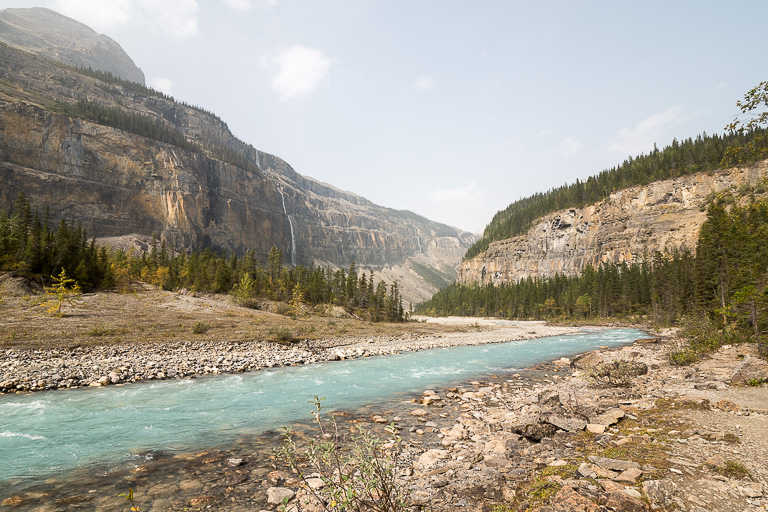
Banff and Jasper have such a depth of wondrous things to see. They really warrant repeat visits, as you can’t possibly take it all in on one trip. I purposefully booked short stays of 2–3 nights, with the goal of doing something new and the intention to come back in a similar fashion.
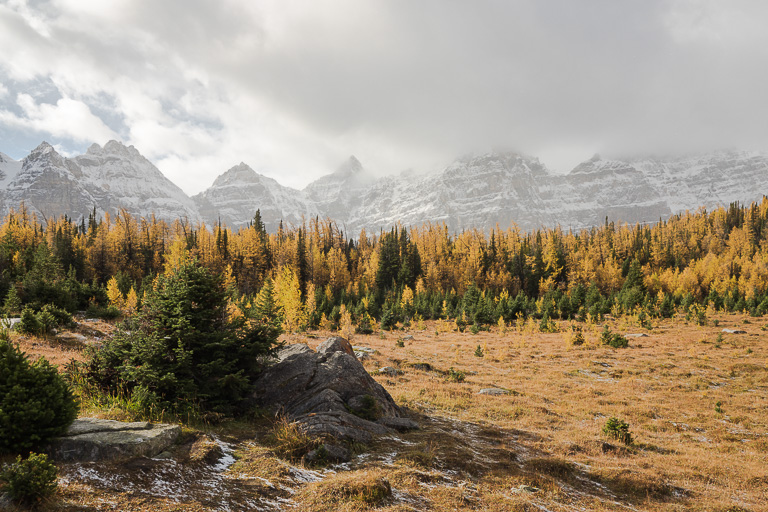
That format worked well for me, and September is a fantastic time for the Rockies and Calgary. I returned this year, with new goals inspired by last year’s sights.
Bookended by long but doable drives to and from Vancouver, my route was pretty simple:
- Banff: 1 night
- Calgary: 5 nights
- Jasper: 5 nights
In Banff, I broke up the drive to Calgary with a quick overnight, which allowed for a morning hike up Sulphur Mountain.
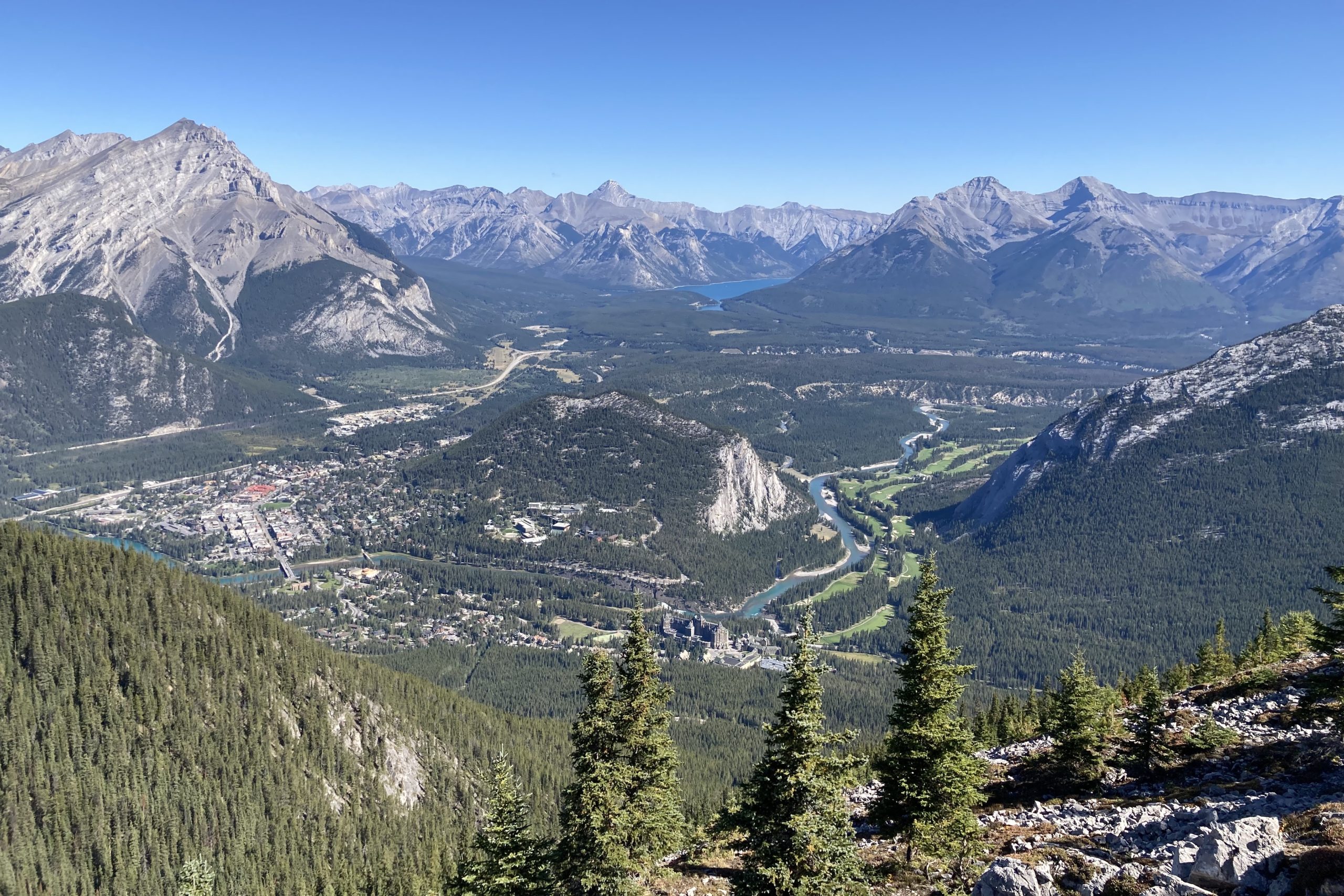
In Calgary, I had a hectic but satisfying time. The core of the trip was spent visiting family, but I never turned off the mileage mindset.
I connected with some Miles & Points friends, including a long-awaited meeting with Jayce. Meanwhile, I’ve nearly convinced my uncle to see the value of award travel, and I got my cousin his first gift cards from the grocery store. 😉
But the crux of the trip was Jasper. Last year was my first time there, and while day hiking near Mount Edith Cavell I got an inkling that there was some juicy stuff to see in the area.
Sure enough, I got home and researched Jasper backcountry trips. The Tonquin Valley kept coming up and instantly captivated me. I knew it would be the backbone of my next trip to the Rockies.
(I’d also planned a day hike on the way to Jasper, but delays and weather led me to cut it and prioritize an easy evening of backcountry preparation instead. Alas, I have a bad habit of skimping on the Icefields Parkway every time I visit!)
As always, the real challenge is on the “redemption” side. Availability for backcountry campsites has been disastrous lately, with more people flocking to outdoor recreation as a safely-distanced yet close-to-home travel alternative during a pandemic.
As soon as I saw campsites and dates that would work, the trip was a go! I was fortunate to snag two nights on two weeks’ notice, with an itinerary that was pretty close to exactly what I was hoping for. I booked one hotel night before, and two after, so I could properly set up and unwind.
The Savings
I’ll soon write a post on detailed strategies to use Miles & Points for adventure travel. Meanwhile, here’s a quick snapshot of how I reduced costs for this trip in particular.
For accommodations in the mountain towns, I usually opt for budget utilitarian properties as a simple staging area for outdoor activities. I booked one night at the Bow View Lodge in Banff, and three (over two stays) at the Tonquin Inn in Jasper.
In fact, I had stayed at both properties last year, with two nights in Banff heavily discounted by a Travelzoo deal and my HSBC World Elite Mastercard‘s annual travel credit.
This time, I booked all four nights in Banff and Jasper on Expedia, using an old stash of TD Rewards points. At an average cash price a bit over $200 per night, I paid a little over 160,000 TD Rewards points in total, at the optimal fixed rate of 0.5 cents per point.

With the current high welcome bonus on the TD First Class Travel Visa Infinite Card, I actually expect to end the month with more TD Rewards points than I started it with. Earn and burn is the name of the game, and an immediate influx to offset a big redemption certainly helps alleviate the sting of a no-frills booking.
For transportation, I drove my own car, which was paid for on my MBNA Alaska Airlines World Elite Mastercard. I’m not going to get into mental gymnastics with points valuations over a major life choice – “buy a Cathay First Class cash fare and get a free car!” – but if a merchant doesn’t take Amex, I’ll take any excuse to pad my scarce balance of high-value Alaska miles.
Also, I was able to cover my gas costs in BC with gift cards. During a recent promotion with a 30% redemption discount, I cashed out six figures of CIBC Aventura points, which I’d earned for free over the years, for over $1,500 of Chevron gift cards at a value of 1.43 cents per point.

For accommodations in Calgary, I stayed with family. Who needs Lifetime Platinum Elite status when you have late checkout, free breakfast, and a dog as a welcome amenity?
And for the backcountry, I didn’t actually have to buy much aside from food. I’ve built up a collection of durable gear over time, and I find it more useful to consider it a hobby expense than a travel expense.
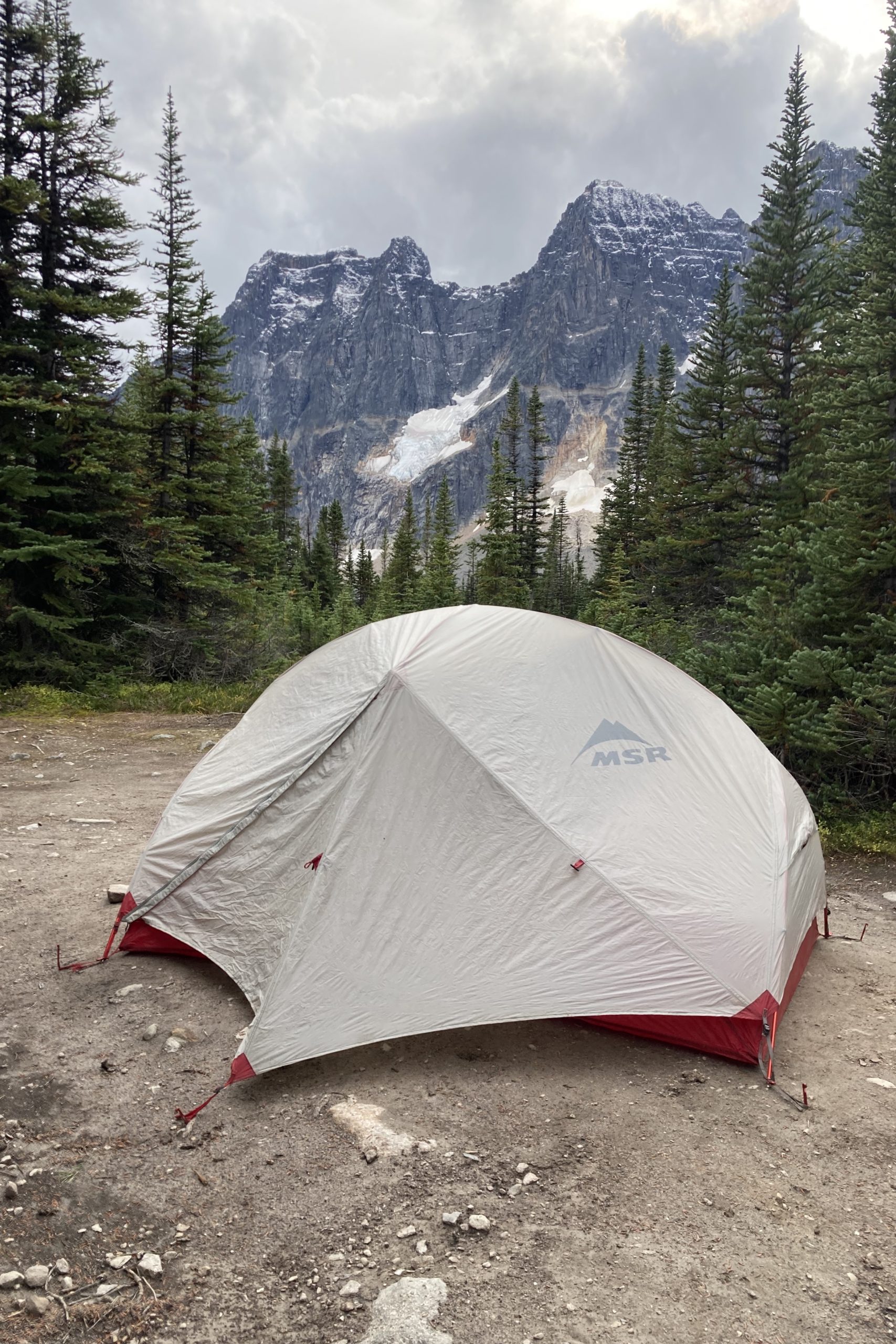
The Adventure
The Tonquin Valley trail is a 44-kilometre through hike. It’s roughly a horseshoe shape as you follow one valley, cross over a mountain pass, and hike out an adjacent valley.
There is a horse camp and a couple of backcountry huts in the area, but for the most part visitors must pack in and pack out everything they need for their trip, including food, clothing, and shelter. (There are ample water sources.)
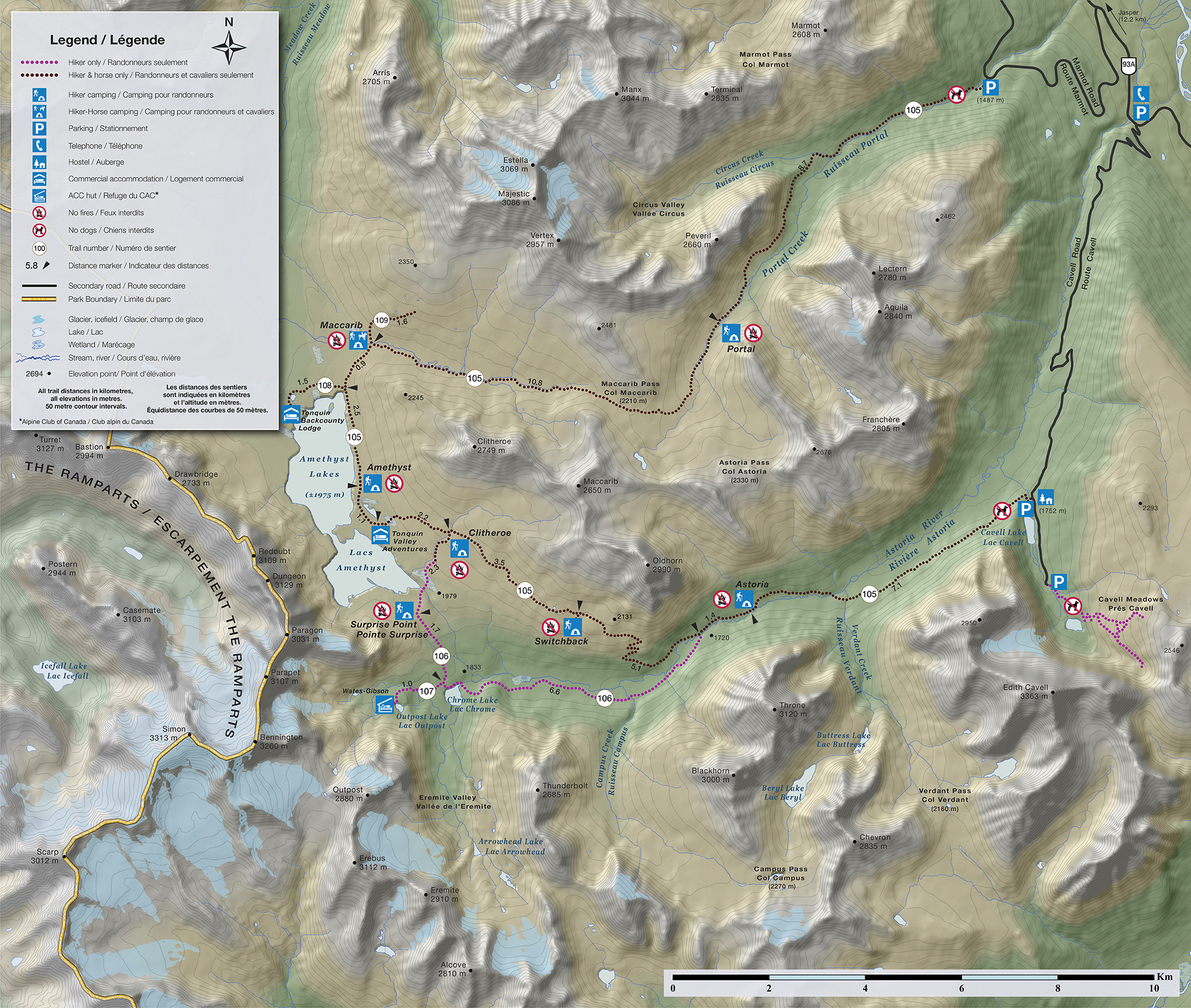
My camping itinerary called for longer hikes in and out, with a lighter day hike and short repositioning with all my gear between two campsites. I was able to travel in the ideal direction to minimize strenuous elevation gain, while maximizing scenic views.
A few days before, I arranged a ride with Caribou Cabs from one trailhead to the other. They charge a flat rate of $100, cash only – no cel reception in the mountains to power a payment machine! This is a hard expense to offset when travelling solo, but a necessary one. The friendly driver was very informative and gave me a useful local’s perspective on what I was in for.
Hiking In
The morning of my hike, I parked my car at Portal trailhead where I would finish, and caught my ride to my starting point at Astoria trailhead. On the first day, I hiked 17 kilometres into my first campsite, Clitheroe. The route was a steady but gentle 550 metres of elevation gain, mostly through forested areas without many views or much wildlife.
It was spitting light rain intermittently on my hike in. Luckily, I pitched my tent right before it started pouring. I mustered the will to cook a proper campground dinner in the rain, but otherwise spent the evening warm and dry in my tent.
The downpour ended overnight, and I awoke to a glorious day in the wilderness.
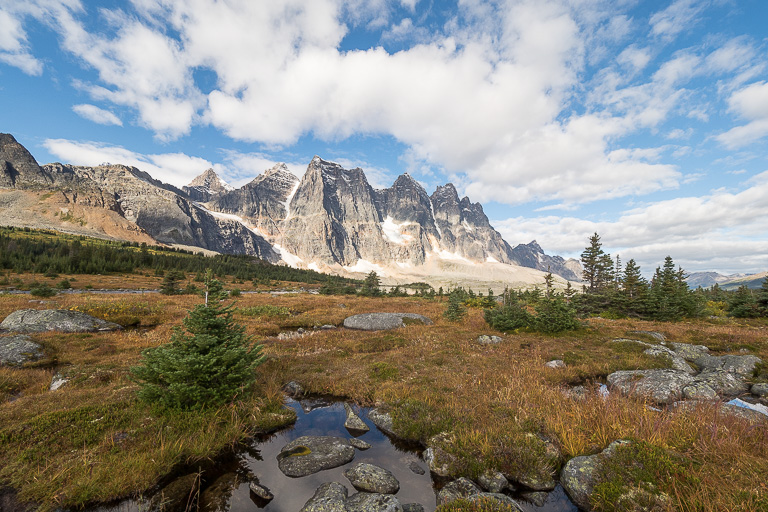
I was glad to do long hikes in and out, with the flexibility to take a full day in between to explore the backcountry at my own pace.
Without my heavy pack, I did a day hike, backtracking up a side trail past Surprise Point and up Eremite Valley.
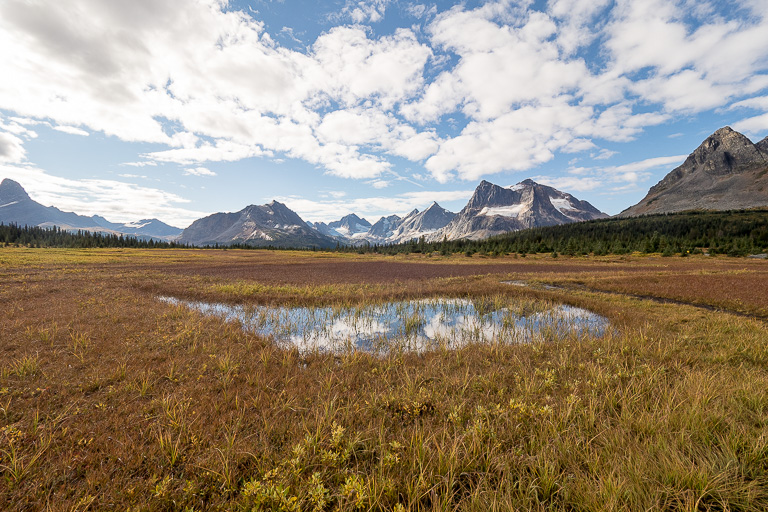
Unfortunately I had to turn back at a washed-out bridge, but this gave me more time to take it easy – a welcome change of plans on an itinerary that was already a bit tight.
Wildlife
Jasper National Park is home to countless large mammals, including wolves, elk, and grizzly bears. Elk are seemingly everywhere – whether roaming through town or gracing the menu at every local restaurant.
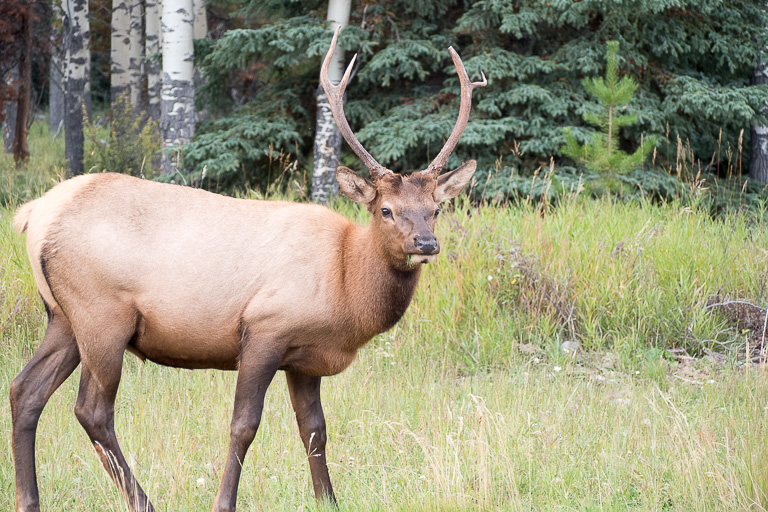
Woodland caribou (reindeer), however, are extremely rare. Sadly, the caribou population in Jasper is small and shrinking due to a number of environmental factors, some of which are indirectly impacted by humans. In fact, there are so few breeding females left that the park has already classified them as functionally extinct.
There are three herds living in the park, all in remote wilderness areas. One herd migrates around the Tonquin Valley. Some other hikers mentioned that the caribou were travelling about a day ahead of me.
I missed the herd, but I was lucky enough to spot two stragglers! After hurrying to try to catch up with them, I had to remind myself to slow down – you could easily hike right past them if you’re not frequently pausing to take in your surroundings.
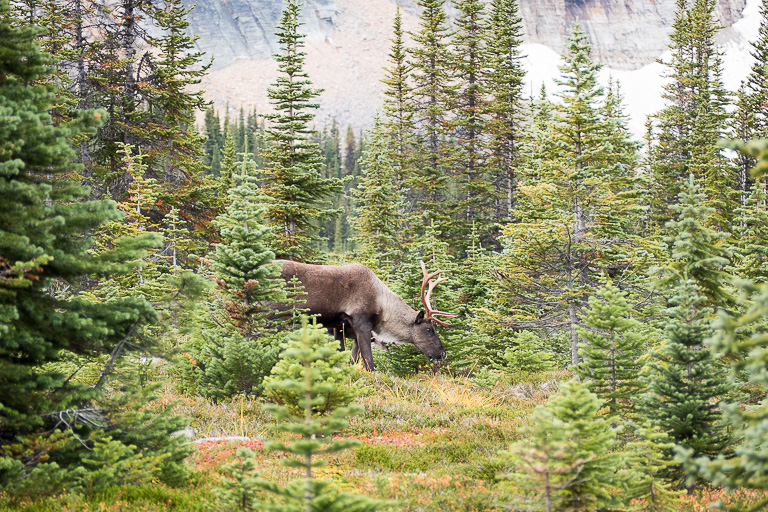
Caribou are distinguished from elk by their white neckbeards and gentle antlers. They struck me as such peaceful creatures. It was truly a treat to encounter them. (I’d been told that I was more likely to see a grizzly bear – maybe next time!)
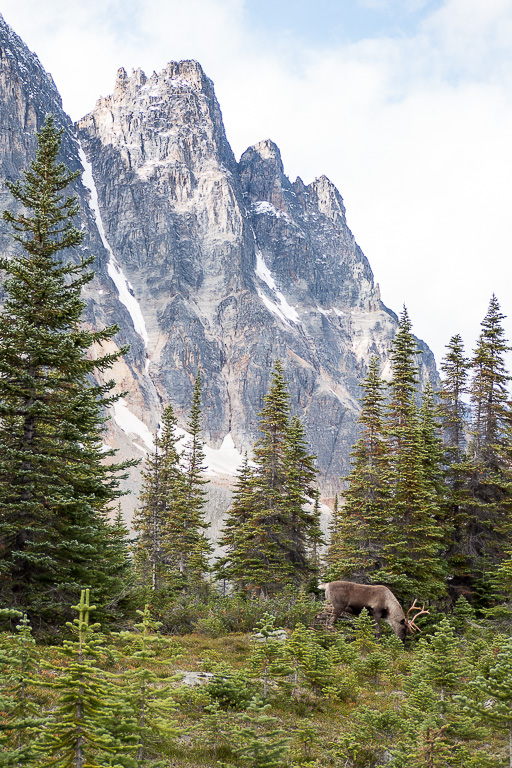
Hiking Out
Passing back through my campsite, I finally broke camp and relocated my gear a short distance up the trail to Amethyst for the night.
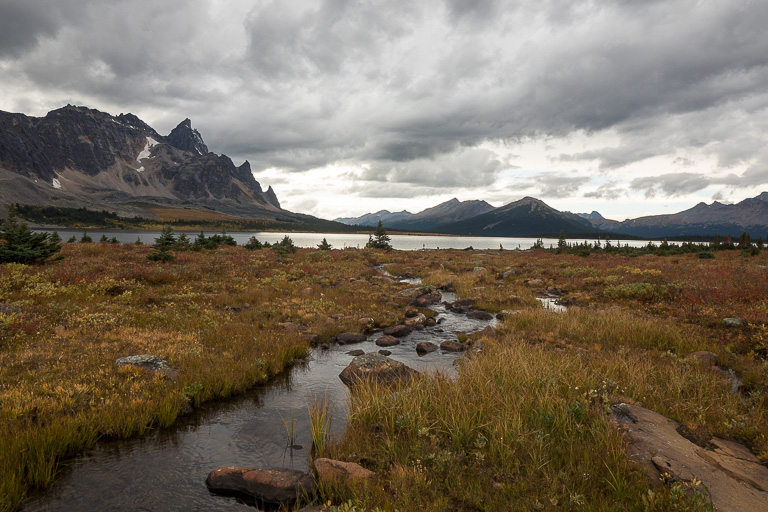
The core of the valley, Amethyst was a bit more lively, with a front-row seat below the towering Ramparts, pleasant evening weather, and more campers, some of whom were doing catch-and-release fishing in the lake.
I hoped for clear skies overnight. It was new moon, and the Milky Way would be visible against the dark sky over the dramatic Ramparts.
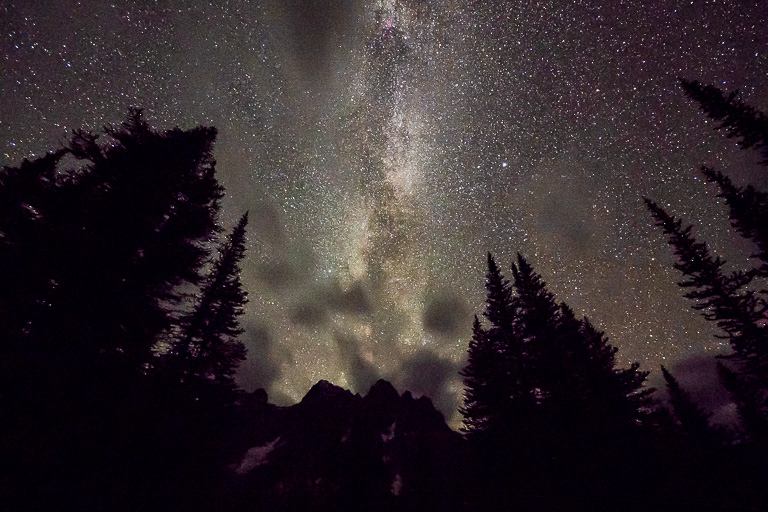
When I was in Jasper last year, the forest fire smoke was quite bad, and visibility was terrible almost every day. I was very relieved to have better air this year, even with a bit of rain and cloud cover.
My last day was a long 22-kilometre hike out. After clearing the Maccarib Pass it’s all downhill and much less muddy – not a difficult hike despite the distance – but still a taxing day, so I made sure to enjoy some morning views first.
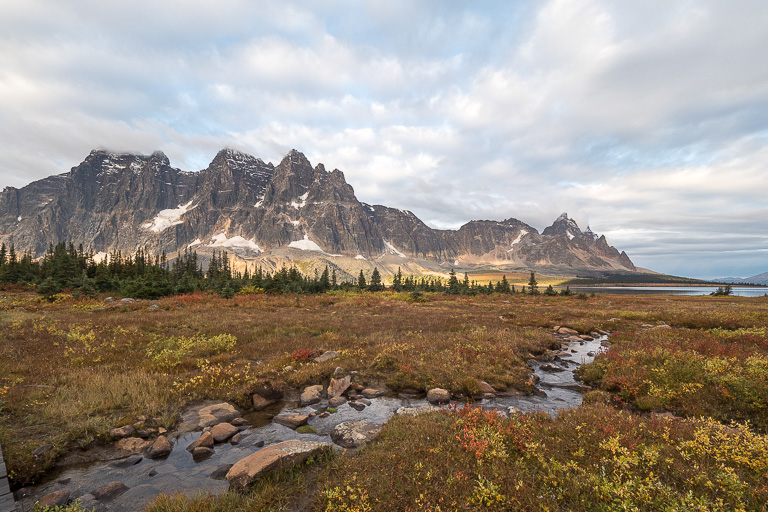
I began by slogging through the mud as I took in the last sights of the Ramparts, before turning my back to the lake for good.

Ascending into the Maccarib Pass, the open area is supposedly prime for wildlife sightings, but to no avail.

Even so, the views of the surrounding mountain ranges were spectacular, with more to see than the forested hike in from Astoria.
Coming out of the Maccarib Pass, there’s also a beautiful reveal of Portal Creek, before the trail dips into the forested valley.
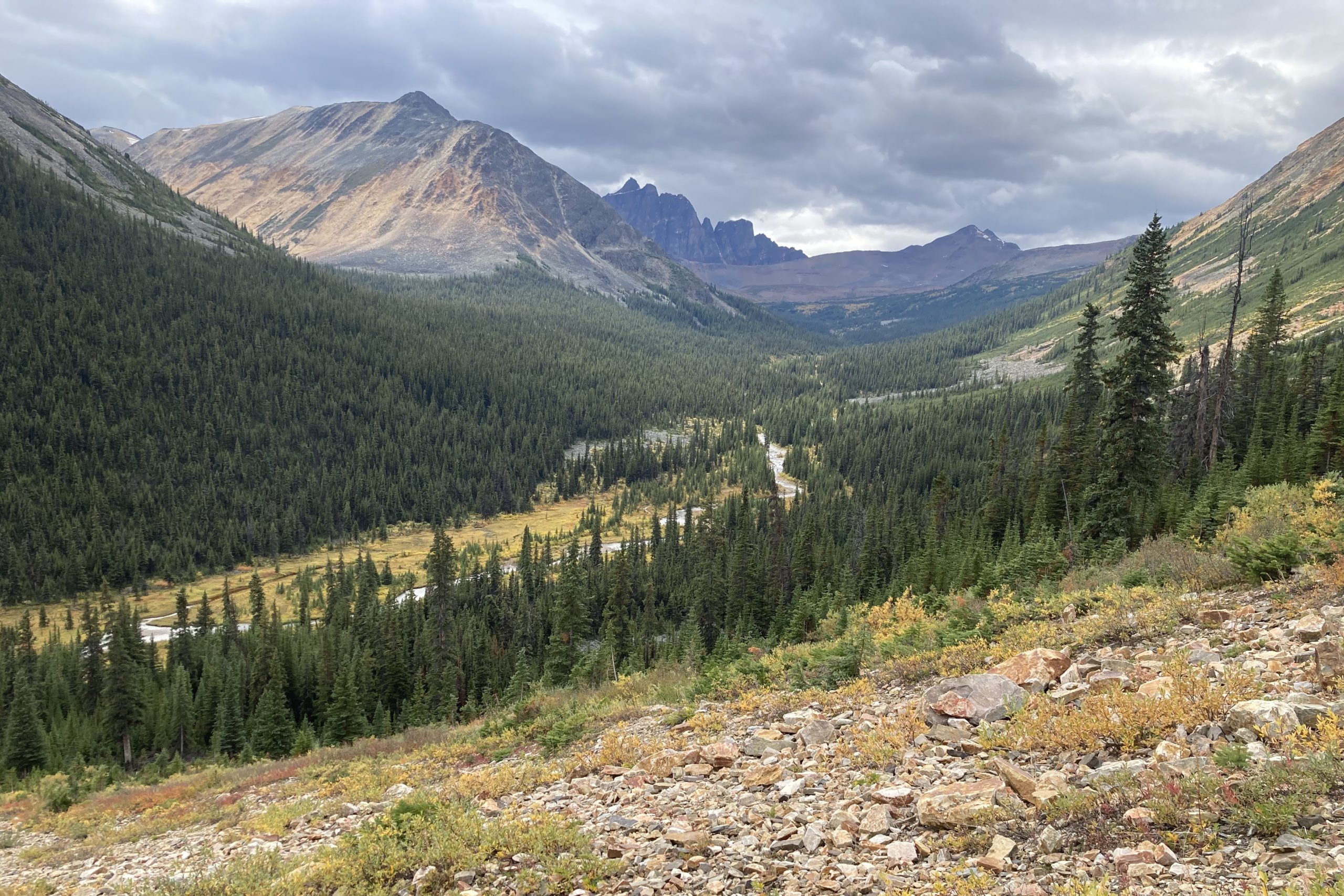
I powered through the final stretch back to civilization, thrilled with my journey but very ready for pizza, beer, and dry socks!
Trail Conditions
The Tonquin Valley is exceptionally muddy, with many ankle-deep bogs right on the trail, especially in the main valley near Amethyst Lakes. Of course, that’s the part of the landscape with the most astonishing views, so you really have to grin and bear it for the payoff.
As a result, parts of the trail were a bit slow and unpredictable, and wet feet were inevitable.
The region also has a lot of mosquitoes, perhaps due to the muddy environment. By the end of summer they’ve mostly died off, and an early cold snap blessed me with a completely bug-free September.
I was also there before the full force of the rainy season set in. I can only imagine how much worse the mud would be a week later! In any event, I picked the sweet spot time of year in a place with a very short peak season. With proper fall clothing it wasn’t even that chilly overnight.
It’s an absolutely stunning hike, and quite well-known, but it seems to be more highly regarded than it is travelled. I’m sure the bugs and the mud are significant deterrents for all but the most ambitious adventurers.

I did see a few other groups each day, and the trails are busy enough to keep solo hikers safe from dangerous animal encounters, but there’s definitely a sense of serenity. Indeed, the campgrounds are small, in part to limit the impact we have on the dwindling caribou habitat.
Despite the conditions, I’d say this is a great route for outdoor adventurers looking to up their game. I’d describe the physical difficulty as moderate, and the campgrounds are equipped with food storage lockers and pit toilets. You hardly need to be a grizzled outdoorsman to enjoy it comfortably.
All in all, it’s totally worth the effort, and I’d love to go back on a three-night itinerary and take more time to properly explore the valley.
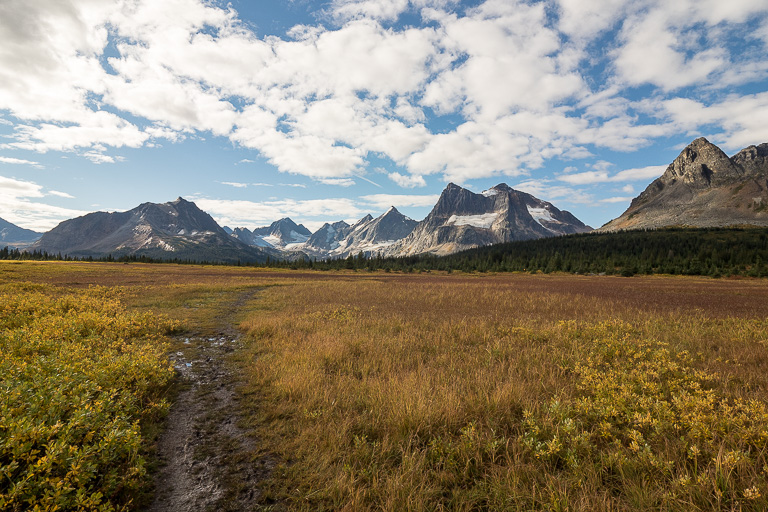
Conclusion
The Tonquin Valley in the Jasper backcountry is truly a marvellous place. You really have to earn it with an arduous journey to get there, but it’s well worth the adventure for anyone with an appetite for that style of travel.
There are so many ways to experience the Rocky Mountains, a part of our planet with something magical to offer for anyone. Every time I return, I’m taken more and more by the deep cuts, and I’m always keen both to discover new sights and to revisit old favourites.

















Josh, the pictures are beautiful and you really described it well. I am loving these more outdoors/adventure articles.